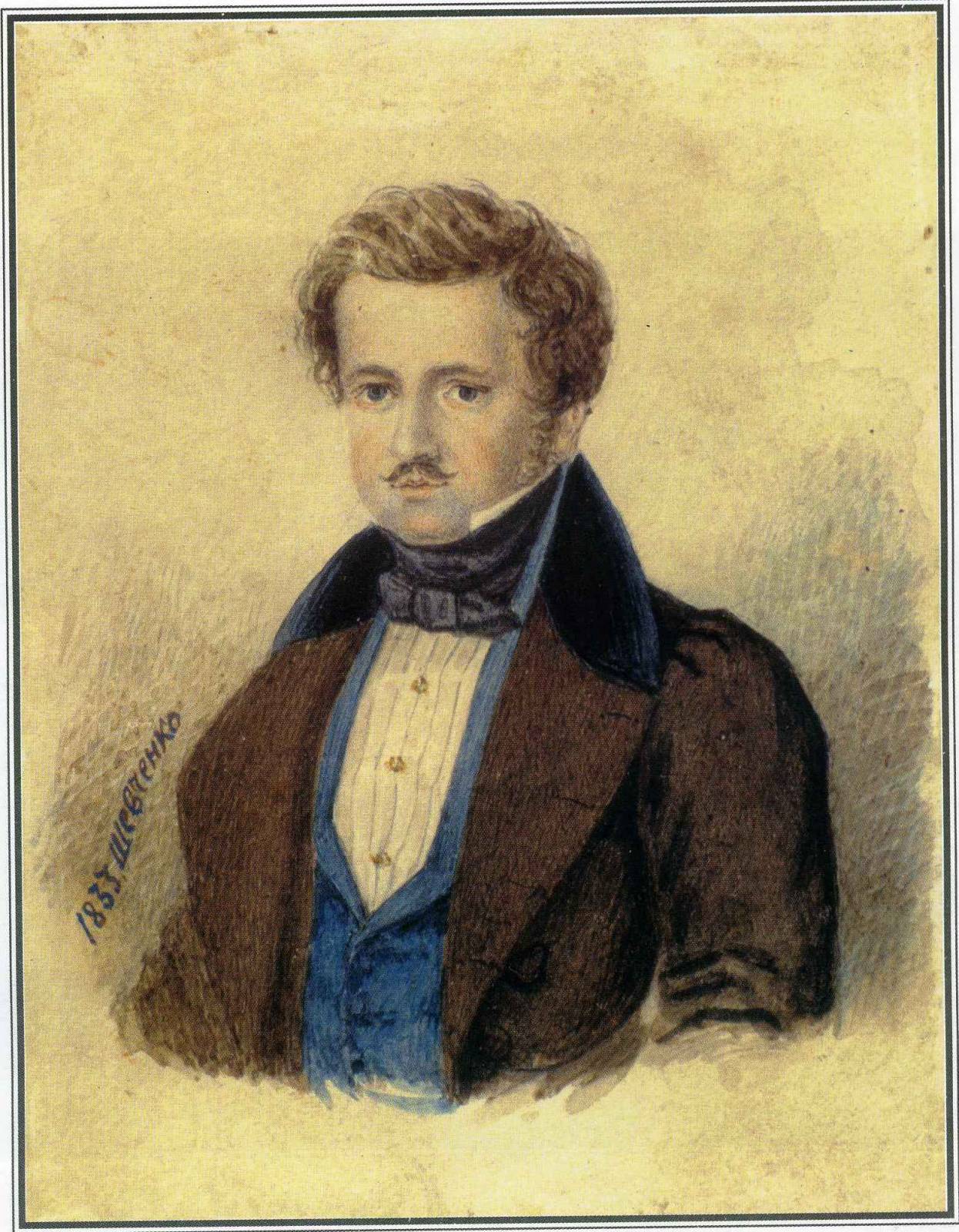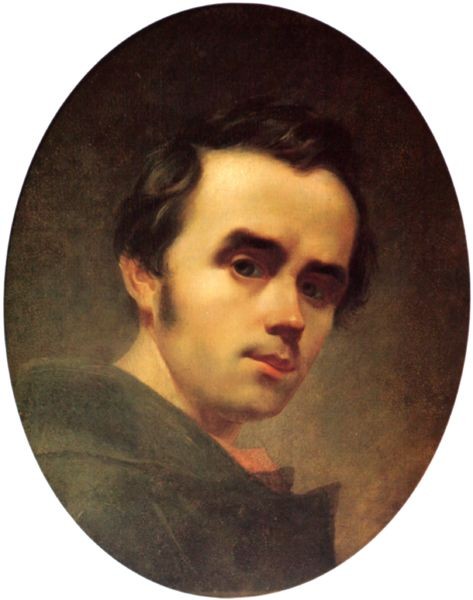Ferdinand Hodler – The Painter Who Revolutionized Swiss Art
Ferdinand Hodler was one of the principal figures of 19th-century Swiss painting. Hodler worked in many styles during his life. Over the course of...
Louisa Mahoney 25 July 2024
Taras Shevchenko was an outstanding Ukrainian artist and poet. Born to a peasant family, he became a Ukrainian liberty idol and national artistic hero. His artworks reflect critical problems in 19th-century Ukrainian society. Today, his ideas are still fresh and relevant.
Taras Shevchenko (1814-1861) was born on March 9, 1814, in the village of Moryntsi, Ukraine. His parents were serf peasants, so nothing predicted a glorious future for Taras. Until 1861, Ukrainian peasants were the property of their landlords who mostly treated them badly. But nobody’s cruelty could have broken true talent. From the age of 8, Taras started to take some grammar classes at a local precentor and from this time, the small boy started practicing drawing. Afterward, Shevchenko took lessons at various precentors, but almost none of them proved to be useful for Taras’ further artistic education.

When Taras turned 14, his master Vasyliy Engelhardt (1755-1828) died and his heir, Pavlo Engelhardt (1798-1849), inherited the wealth. Under Pavlo’s rule, Shevchenko became a room servant. Once, while the landlord was absent, Taras was drawing a picture of Cossack Matviy Platov. The boy was later caught drawing by a burning candle. Engelhardt was enraged by the boy causing an arson danger to his house and had him whipped in the stables.

Nonetheless, Pavlo Engelhardt appreciated his talent. It was well perceived to have a home artist at that time. Later, the master took his servant to Vilnius where Shevchenko learned more about art. As a boy, he became fascinated with art and painting; at age 16, he did his earliest surviving artwork, The Bust of a Woman. This picture is currently stored in The National Taras Shevchenko Museum in Kyiv, Ukraine.

Intent on turning his servant into a chamber painter, Engelhardt traveled to Saint Petersburg with the boy, where famous artist Vasiliy Shiryaev became Shevchenko’s private teacher in St. Petersburg. At night and in his free time, Taras would go to the Summer Garden to draw statues and compose his early poems.
About my first literature experiments I can tell the only thing: they started at the Summer Garden during moonless nights. Ukrainian harsh muse avoided my taste, perverted by my school life, in landlord’s hallway. But when the breath of freedom brought my feelings back to the innocence of the first years of my life. It [Ukrainian muse – author’s note] embraced me by the foreign side. The first of my weak experiments, written in the Summer Garden, was Prychynna.
Taras Shevchenko, letter to “People’s reading” editor-in-chief.
During his studies in St. Petersburg, he gained many achievements, from securing a gold medal at the Imperial Academy of Art to participating in the painting of the Bolshoi Theatre in Moscow as a junior artist.
Once, when painting in the Summer Garden, Shevchenko met Ukrainian artist Ivan Soshenko (1807-1876). Ivan introduced Taras to a community of famous painters such as Karl Brullov (1799-1852), Vasiliy Zhukovskiy (1783-1852), and Vasiliy and Alexei Venetsianov. Shevchenko visited The State Hermitage Museum where the young peasant artist saw paintings of Van Dyck, Rubens, and Velazquez for the first time.
In the spring of 1838, Karl Brullov and Vasiliy Zhukovskiy decided to free Shevchenko from serfdom. Engelgardt agreed, but the price was very high at 2,500 rubles. The equivalent of the value of an entire estate!
To earn money, Brullov painted a portrait of Zhukovskiy who was a teacher of the heir to the Russian throne. Even the Imperial family participated in the auction!

In April 1838, Shevchenko found himself free. Then, he entered the Imperial Academy of Art and graduated with success. Because of his peasant background, many people thought Shevchenko to be poorly educated. However, he impressed others with knowledge and skills earned thanks to his own efforts, from his presence in the highest circles of the intelligentsia of the Russian Empire, and his studies at the Academy of Art. Taras became Karl Brullov’s favorite student.
Shevchenko’s poems overwhelmed Ukrainian society. They are full of pain and sorrow for those whose lives are a chain of misery. Shevchenko was the only Ukrainian painter who brought up themes of liberty that resist the cynicism of powerful aristocrats. A special place in his artwork is dedicated to Ukrainian women’s fates. For instance, Shevchenko presents the most common character of Ukrainian women: “pokrytka” (literally – “covered girl”). “Pokrytka” is a young girl who lost her virginity before marriage and gave birth to a child.
Kateryna (Catherine) is the main heroine of the self-titled poem. It is a story of a young girl seduced by a Russian officer. After her pregnancy is discovered, she is rejected both by her family and society. She’s forced to run away into self-exile. Alone and disgraced, she walks toward a tragic death and bids farewell to unfaithful Muscovites.
Oh, lovely maidens, fall in love,
But not with Muscovites,
For Muscovites are foreign folk,
They do not treat you right.

Ukraine is the leading topic of both Taras Shevchenko’s paintings and poems. Some critics complained about how Shevchenko chose to write in Ukrainian. Interestingly, Ukrainian grammar was non-existent in the 19th century, which is why Shevchenko had to write Ukrainian words using Russian letters.
Shevchenko disapproved of the monarchy and criticized Russian emperors who established serfdom in Ukraine. His strict anti-monarchistic poem Caucus triggered the government to arrest him. However, Taras Shevchenko encouraged the idea of Slavic brotherhood. The Ukrainian artist spent over 10 years in prison and in exile. At the time, he was forbidden to write and draw. Nevertheless, he carried on creating poems on small pieces of paper. There aren’t enough words to fully cover the scope and uniqueness of Taras Shevchenko’s legacy. However, the following quote by Ukrainian writer, Ivan Franko, is a good start.
He was a peasant’s son and became a prince in the 26 realm of the spirit. A became a great force in the community of human culture. Simply man discovered a newer and freer order for professors and scholars. He suffered ten years from Russian militarism, but has done more for the freedom of Russia than ten victorious armies.
Ivan Franko, May 12, 1914

DailyArt Magazine needs your support. Every contribution, however big or small, is very valuable for our future. Thanks to it, we will be able to sustain and grow the Magazine. Thank you for your help!